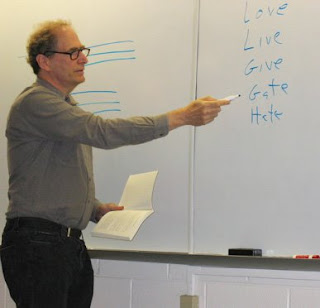Iconoclasm and its discontents
 Here is the first paragraph of Bob Perelman's old article "Building a More Powerful Vocabulary: Bruce Andrews and the World (Trade Center)":
Here is the first paragraph of Bob Perelman's old article "Building a More Powerful Vocabulary: Bruce Andrews and the World (Trade Center)":
Not many days after the 1993 bombing of the World Trade Center, the New York Times ran an article discussing the structure of the building and the possibilities of its being brought down by a larger and more thoughtfully placed explosion. It turns out not to be easy: apparently, each tower is built to withstand the impact of a fully loaded jet liner taking off. In addition to the strength of the structure, attackers would have to confront its complexity: there are twenty-one load-bearing pillars and they could not be reached simultaneously by the force of an explosion. In being destroyed, a particular section would in fact shield other areas by absorbing the impact. The timing and placement of the article is interesting in itself: it was a rapid-response anodyne to the spiral of geopolitical urban trauma while at the same time, under the cover of a discussion of engineering, it invited its readers to participate in transgressive calculations of how the Trade Center towers might actually be brought down.
Just a bit more of this article can be read here. The link to Bob Perelman's own home page seems to have broken in the years since I first excerpted the article for my students. Not sure why. I'll ask Bob.